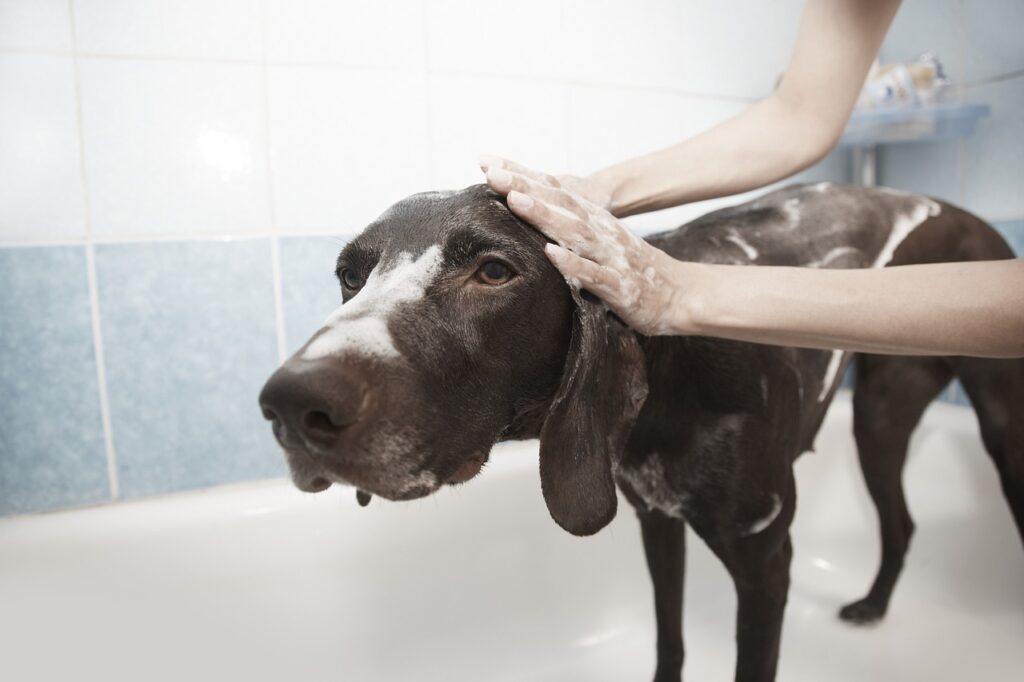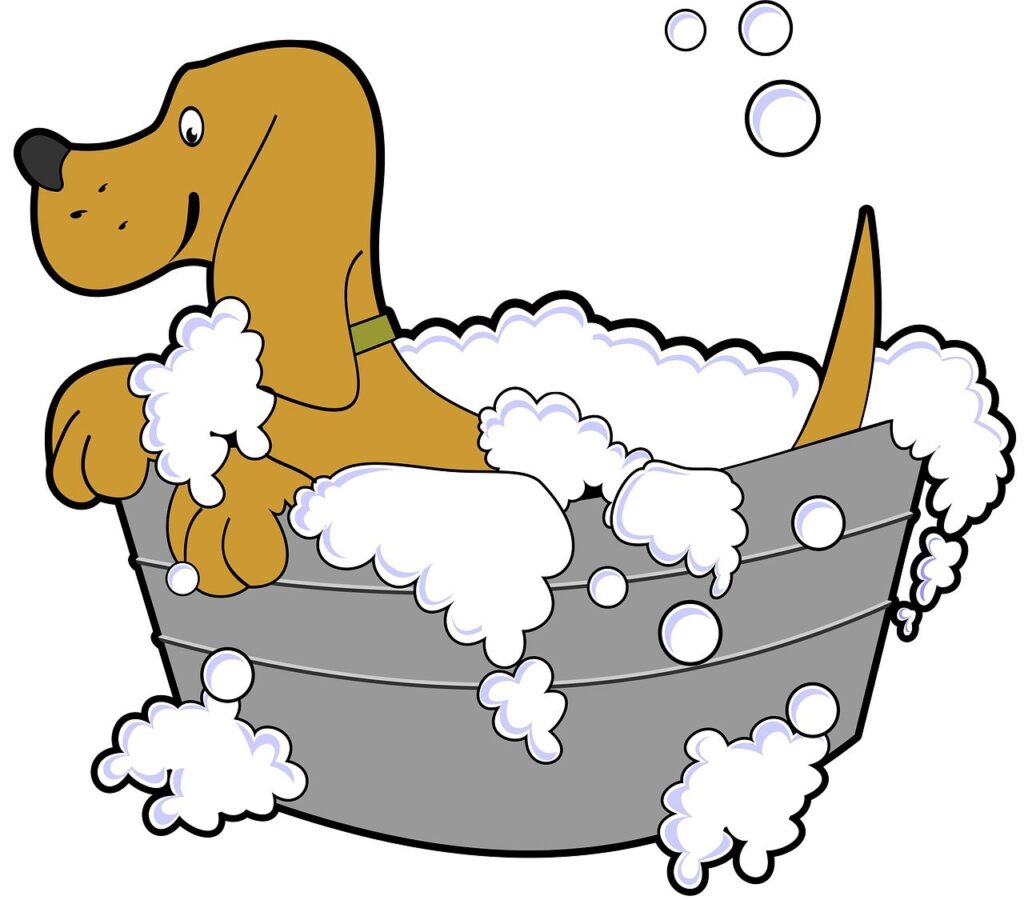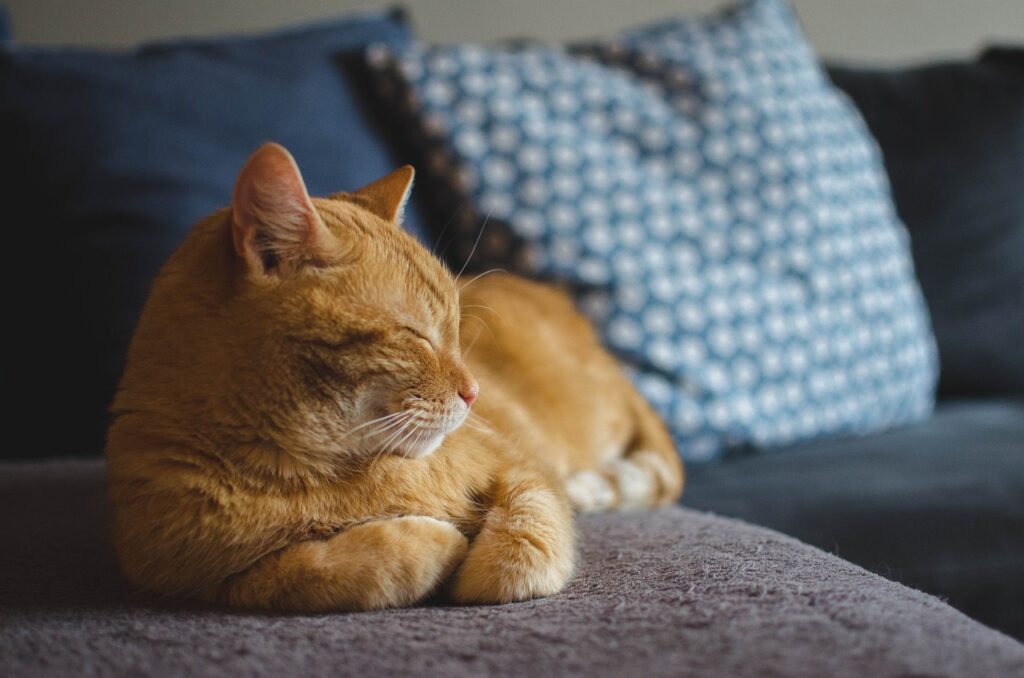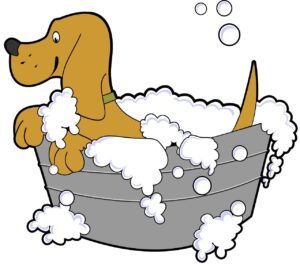Taking care of your furry friend involves more than just feeding and cuddling. The grooming needs of your pet play a crucial role in keeping them healthy and happy. But how often should you groom your pet? Whether you have a dog, cat, or any other furry companion, understanding their specific grooming needs is essential. From regular brushing to bathing and nail trimming, finding the right grooming frequency can ensure your pet’s coat stays shiny, their skin remains healthy, and they enjoy the pampering they deserve. So, let’s explore the appropriate grooming intervals for different pets and discover the benefits of maintaining a proper grooming routine.

General Guidelines for Grooming Frequency
Considering the Type of Pet
When it comes to grooming your pet, it is essential to consider the type of pet you have. Different types of animals have different grooming needs, so understanding your pet’s specific requirements is crucial. Whether you have a dog, cat, small mammal, or bird, each species has unique grooming needs that should be taken into account.
Considering the Breed of the Pet
In addition to the type of pet, the breed also plays a role in determining grooming frequency. Different breeds have specific grooming requirements based on factors such as coat length, thickness, and texture. It’s important to familiarize yourself with the grooming needs of your pet’s particular breed to ensure they stay clean and healthy.
Considering the Coat Type of the Pet
The coat type of your pet is another vital factor to consider when determining grooming frequency. Pets with short-haired coats tend to require less grooming compared to those with long or curly hair. Understanding your pet’s coat type will help you establish a grooming routine that suits their specific needs and keeps their fur in optimal condition.
Grooming Frequency for Dogs
Short-Haired Dogs
If you have a short-haired dog, you might be pleased to know that they typically require less grooming than their long-haired counterparts. However, regular brushing is still necessary to remove loose hair and keep their coat smooth and healthy. A weekly brushing session should be sufficient for most short-haired dogs.
Medium-Haired Dogs
Medium-haired dogs typically have thicker coats that require more attention than short-haired breeds. Regular brushing, around two to three times a week, is recommended to prevent matting and remove loose hair. Additionally, these dogs may benefit from occasional bathing to keep their coat and skin clean.
Long-Haired Dogs
Long-haired dogs, such as Afghan Hounds or Shih Tzus, require frequent grooming to maintain their majestic coats. Daily brushing is crucial to prevent matting and tangling, as well as to remove debris from their fur. Regular bathing is also necessary, aiming for once every two to four weeks, depending on their activities and coat condition.
Curly or Wavy-Haired Dogs
Dogs with curly or wavy hair, like Poodles or Bichon Frises, need special attention to keep their coats looking their best. Daily brushing is essential to prevent matting, as these coats are prone to tangling. Additionally, professional grooming every six to eight weeks is recommended to maintain the desired coat length and style.
Dogs with Double Coats
Breeds such as Siberian Huskies or Golden Retrievers have double coats, consisting of an insulating undercoat and a longer topcoat. These dogs require regular brushing, especially during shedding seasons, to minimize loose hair and prevent matting. A weekly brushing session, along with occasional bathing, should suffice for dogs with double coats.
Grooming Frequency for Cats
Short-Haired Cats
Short-haired cats, such as Siamese or Abyssinians, generally have coats that require minimal grooming. Regular brushing once or twice a week helps to remove loose hair and keep their coat shiny. However, cats are excellent self-groomers, so they usually take care of their grooming needs on their own.
Medium-Haired Cats
Medium-haired cats, like Maine Coons or Ragdolls, have longer and denser coats that require more attention. Brushing their fur two to three times a week is necessary to prevent matting and hairballs. Cats with medium-length hair may also benefit from occasional baths to keep their coats clean and healthy.
Long-Haired Cats
Long-haired cats, such as Persians or Himalayans, have some of the most beautiful but high-maintenance coats. Daily brushing is imperative to prevent matting and tangling, as their long fur is prone to knots. In addition to regular brushing, long-haired cats may need professional grooming every few months to maintain their coat’s length and condition.
Grooming Frequency for Small Mammals
Rabbits
Rabbits have self-sufficient grooming habits and typically do not require frequent baths. However, regular brushing is important to remove loose fur and prevent hairballs. Depending on the rabbit’s coat length, weekly brushing should suffice to keep their fur in good condition.
Guinea Pigs
Guinea pigs have short hair that generally does not require extensive grooming. Regular brushing once a week is usually enough to keep their coat clean and healthy. However, long-haired guinea pigs may need more frequent brushing to prevent matting.
Hamsters
Hamsters have short hair and are self-groomers, so they require minimal grooming. Regular brushing is not necessary, but providing them with a sand bath or dust bath can help keep their fur clean and reduce oiliness.
Gerbils
Gerbils, like hamsters, have short hair and groom themselves effectively. Brushing is not typically necessary, but providing them with sand baths or dust baths can help maintain their coat’s cleanliness.
Chinchillas
Chinchillas have dense fur that needs regular attention to prevent matting and overheating. Daily dust baths should be provided to keep their fur clean and healthy. Avoid using water for bathing, as it can cause the fur to become damp and matted.
Ferrets
Ferrets have short hair and are generally low-maintenance in terms of grooming. Occasional bathing is recommended, approximately once every three months, to keep their coat clean and prevent odor. However, regular brushing is not usually necessary.

Grooming Frequency for Birds
Canaries and Finches
Canaries and finches are small birds with relatively low grooming needs. Regular bathing or misting can help keep their feathers clean and in good condition. Additionally, providing them with opportunities to bathe in shallow water helps mimic their natural grooming behavior.
Parakeets and Budgies
Parakeets and budgies require regular bathing to keep their feathers clean and healthy. Offering them a shallow dish of water or placing a bird bath in their cage a few times a week allows them to groom themselves. Additionally, misting their feathers with water can help keep them in good condition.
Cockatiels
Cockatiels have crest feathers that require regular attention to prevent matting and keep them clean. Regular bathing, misting, or providing a shallow water dish for them to bathe in helps maintain their crest feathers’ appearance and health.
Cockatoos and Macaws
Cockatoos and macaws are larger birds with significant grooming needs. Regular bathing, misting, or showering should be offered to these birds to keep their feathers clean and prevent dryness. Additionally, providing them with opportunities to preen and groom themselves is crucial for their mental stimulation.
Special Grooming Needs for Certain Pets
Pets with Skin Conditions
If your pet has skin conditions, such as allergies or dermatitis, regular grooming can help alleviate their symptoms. Bathing with medicated shampoos as recommended by your veterinarian can help soothe the skin and manage any underlying conditions.
Pets with Allergies
Pets with allergies may require more frequent grooming to remove allergens from their fur and skin. Regular bathing and brushing can help reduce the presence of allergens and provide relief to your furry friend.
Pets with Fleas or Ticks
If your pet has fleas or ticks, immediate action is necessary to eliminate these parasites. Regular grooming, including thorough inspection and removal of fleas or ticks, is crucial. Consult with your veterinarian to determine the most effective treatments for your pet.
Pets with Dental Issues
Proper dental care is essential to your pet’s overall health. Regular brushing of your pet’s teeth, at least two to three times a week, can help prevent dental issues such as plaque and tartar buildup. Additionally, regular veterinary dental cleanings may be necessary depending on your pet’s specific needs.
Pets with Overgrown Nails
Regular nail trimming is necessary for pets with overgrown nails. Long nails can cause discomfort, difficulty walking, and may even lead to injury. If you are unsure about how to trim your pet’s nails safely, consult with a professional groomer or your veterinarian for guidance.

Factors to Consider Beyond Coat Care
Eyes and Ears
Aside from coat care, it’s important to regularly check and clean your pet’s eyes and ears. Keeping these areas clean and free from debris helps prevent infections and discomfort. Wiping the outer corners of their eyes gently with a damp cloth and using veterinarian-approved ear cleaning solutions for their ears can help maintain their health.
Teeth and Oral Health
In addition to dental care, regular attention to your pet’s teeth and oral health is crucial. Brushing your pet’s teeth regularly using a pet-specific toothbrush and toothpaste can prevent dental issues and promote overall well-being.
Nail Trimming
As mentioned earlier, regular nail trimming is important for your pet’s comfort and safety. Long nails can cause pain and may impact their ability to walk properly. Remember to use proper tools and techniques, or seek professional help if you are uncertain about nail trimming.
Anal Gland Expression
Some pets, particularly dogs, may require periodic anal gland expression. These glands can become impacted or infected, causing discomfort and other health issues. Consult with your veterinarian or a professional groomer to learn how to properly express your pet’s anal glands or have it done for you.
Benefits of Regular Grooming
Promotes Bonding
Regular grooming sessions allow you to spend quality time with your pet, strengthening the bond between you. This shared experience can help build trust and enhance the overall relationship.
Maintains Skin and Coat Health
Regular grooming helps maintain the health of your pet’s skin and coat. Brushing removes loose hair and distributes natural oils, contributing to a healthy and shiny coat. Additionally, grooming promotes blood circulation, which can improve skin health.
Prevents Matting and Tangles
Frequent brushing, especially for pets with longer coats, helps prevent matting and tangling. Matting can be uncomfortable for your pet and may lead to more serious skin issues, such as infections. Regular grooming sessions help keep their fur in good condition and minimize the risk of matting.
Detects Health Issues Early
Regular grooming allows you to closely examine your pet’s body for any abnormalities or signs of health problems. Early detection of lumps, skin irritations, or other issues can lead to timely veterinary intervention, improving the chances of successful treatment.
Reduces Pet Odor
Regular bathing and grooming help control pet odor, keeping your furry friend smelling fresh and clean. Good hygiene practices can significantly reduce any unpleasant smells that may emanate from your pet.

Potential Risks and Mistakes in Grooming
Skin Irritation and Allergic Reactions
Improper grooming techniques or using the wrong grooming products can potentially cause skin irritation or trigger allergic reactions in your pet. Always consult with your veterinarian or a professional groomer for guidance on the appropriate grooming methods and products for your specific pet.
Injuries from Improper Handling or Tools
Using grooming tools incorrectly or mishandling your pet during grooming sessions can lead to injuries. Be gentle and patient when grooming your pet, and if you’re unsure about a specific tool or technique, seek professional advice.
Over-Grooming and Over-Brushing
While regular grooming is important, over-grooming or excessive brushing can damage your pet’s skin or coat. Follow the recommended grooming frequency for your pet’s specific needs, and be mindful of any signs of skin irritation or discomfort.
Neglecting Specific Grooming Needs
Failing to address specific grooming needs, such as dental care or nail trimming, can lead to health problems for your pet. Ensure you are aware of all the necessary grooming tasks and make them a regular part of your pet’s care routine.
Conclusion
Grooming is an essential part of caring for your pet, as it not only keeps them looking their best but also plays a crucial role in maintaining their overall health and well-being. By understanding your pet’s specific grooming needs based on their type, breed, and coat type, you can establish a grooming routine that suits them best. Regular grooming sessions offer numerous benefits, including bonding opportunities, skin, and coat health maintenance, prevention of matting and tangles, early detection of health issues, and minimizing pet odor. However, it is crucial to approach grooming with caution, ensuring you follow proper techniques, use suitable tools and products, and address all your pet’s grooming needs. By dedicating time and effort to grooming your pet, you are making a positive impact on their quality of life and ensuring their happiness for years to come.

